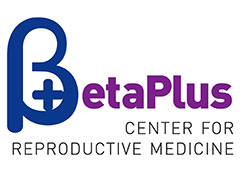Embryo cryopreservation is a procedure in which a surplus of vital embryos developed in an IVF/ICSI procedure are cryopreserved (frozen) for later use.
Embryos are frozen by vitrification, at -196ºC. The procedures of freezing and thawing are strictly controlled, as not to damage or lose embryos. Frozen embryos are kept in special lab containers, immersed into liquid nitrogen. Every embryo is marked separately – with information on its origin, its current division phase and the exact date and time of freezing.
Embryos are kept frozen until a couple asks for their usage. When the reproductive gynecologist prepares the uterine lining for embryo transfer and assesses with the ultrasound exam that the conditions for embryo transfer are met, the process of controlled thawing of embryos begins.
It is important to know that not all embryos are of appropriate quality for controlled freezing and thawing, as they may not survive the process itself. Because only good quality embryos are frozen, most of them survive the thawing process. Pregnancy rates after frozen embryo transfer can be quite high, around 50% when blastocysts are transferred.




